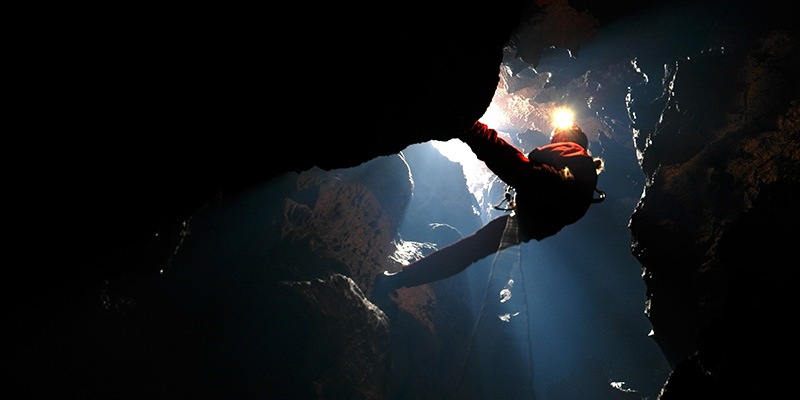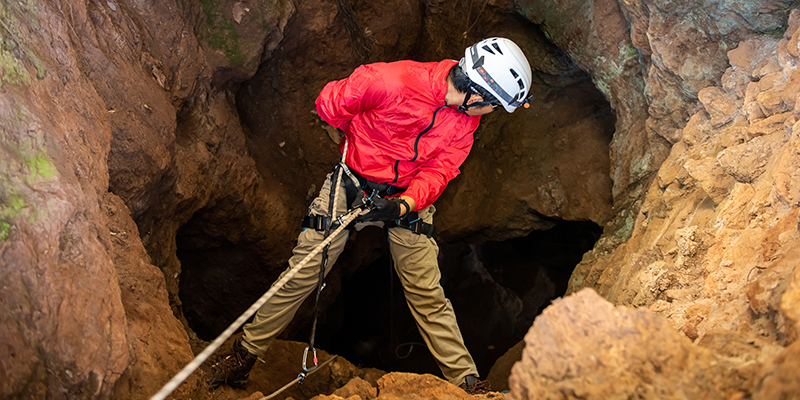
Navigating Challenging Terrains: Safety & Rescue Rope Applications in Caving Expeditions
Caving, also known as spelunking or potholing, is an adventurous outdoor activity that involves exploring natural or artificially created caves. It has evolved from mountaineering sports and shares similar risks with other outdoor technical sports such as rock climbing, ice climbing, rappelling, and canyoneering. Caving can be divided into two main types: wet cave exploration and dry cave exploration. Successful cave exploration demands a high level of technical skills and expertise, as cavers frequently encounter challenging terrains and must utilize various rope techniques, such as single rope ascending, climbing, swimming, and diving, to navigate deep into the cave systems. Both natural and artificially created caves are explored, making it necessary to carry specialized equipment distinct from regular mountaineering or outdoor activities. This article will mainly focus on essential caving gear, including clothing and lighting equipment, rope gear, and observation tools.
Caving Clothing:
Caving clothing usually comes in three main types: cotton caving suits, water-resistant coated suits, and insulated wetsuits.
1.Durability: Caving suits must be highly abrasion-resistant, especially in areas prone to wear, such as the buttocks, elbows, and knees. The uneven and narrow cave passages can cause frequent rubbing and abrasion of clothing.
2.Insulation: Many caves are formed by underground rivers, leading to high humidity levels. Insulated clothing is essential to keep cavers warm and comfortable in such damp environments.
3.Proper Fit: Caving suits are recommended to have a snug fit to prevent snagging on cave formations and ensure ease of movement in narrow passages.
Helmets:
Helmets are essential for cavers to protect their heads from low-hanging stalactites, protruding rocks, or falling debris. A caving helmet should be lightweight, sturdy, well-ventilated, and designed to absorb impact effectively.
Lighting Equipment:
Cavers carry multiple independent lighting tools to ensure safety in case of unexpected failures. LED flashlights, headlamps, and powerful handheld torches are commonly used for their reliability and efficiency. Rechargeable headlamps are not recommended due to the lack of charging facilities in caves. Instead, headlamps that use replaceable batteries, such as size 5 batteries, are preferred, and extra batteries should be carried.
Rope Gear:
Ropes are the lifeline of cave exploration, and their quality and performance are crucial due to the unique cave environment. Static ropes are commonly used in caving due to their high strength, low stretch, and resistance to moisture and abrasion. Xmonster's static ropes are lightweight, flexible, and durable, designed to meet the specific needs of cavers in challenging cave environments.
Safety Harness:
Unlike climbing or rescue harnesses, cave safety harnesses are designed to provide cavers with maximum mobility while hanging on a single rope. A chest harness is also used to keep cavers close to the rope during ascending and to facilitate smooth operations.
Ascenders:
Hand ascenders, chest ascenders, and foot ascenders are used for ascending along the rope. Hand ascenders with handles are preferred for better usability in challenging cave conditions.
Descenders:
Various types of descenders, such as self-locking descenders and non-self-locking descenders, are used for controlled descents in caves.
Cowstails:
Cowstails are short pieces of rope or webbing that connect the harness to the main locking carabiner, allowing for easy maneuvering during rope ascents and descents.
Carabiners:
Carabiners are an essential part of caving gear, serving various purposes based on their shape, size, and functionality. They must be made of high-quality materials, such as aluminum alloy or steel.
Tackle Bag:
A tackle bag is a rectangular waterproof bag used to carry ropes and other equipment. It can be connected to the harness through a short length of rope, preventing it from getting entangled with the caver's feet.
Observation Tools:
Pre-exploration observation is crucial for cavers to plan their route and avoid hazards. Night vision goggles and infrared thermal imagers are valuable tools for enhanced visibility in pitch-black cave environments.

Caving offers thrilling opportunities to explore the hidden mysteries of the underground world. However, the challenging terrains require careful planning and the use of specialized equipment, including safety and rescue ropes. By prioritizing safety and adhering to best practices, cavers can confidently embark on their expeditions, equipped with the tools to overcome various obstacles that caves may present.

